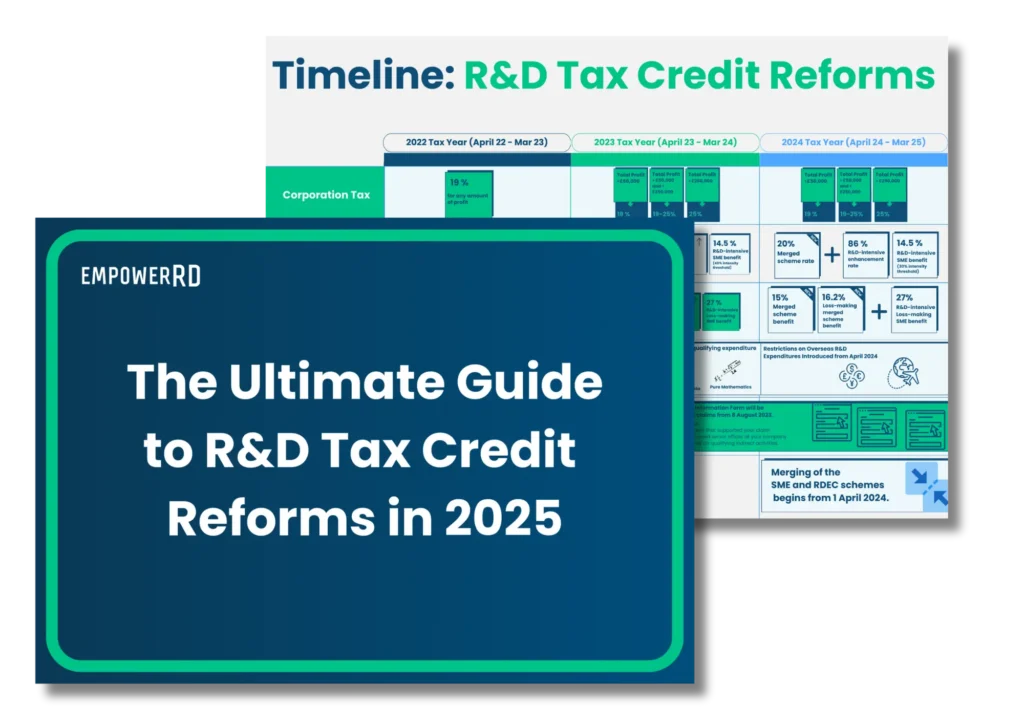Investment benchmarks: £1.46 million and 12% intensity
Interested in seeing how your businesses R&D budget compares? According to our UK Innovation Report 2025, medium-to-large companies (50–500 employees) spend an average £1.46 million a year on R&D, equivalent to 12% of total expenditure.
In fact, R&D spending is on the rise. 73% of businesses have increased R&D investment over the past three years, and 82% expect it to keep growing.
Even in challenging economic conditions, scale-ups are doubling down on innovation. But investing in R&D alone is just one half of the story; R&D tax credits are also an essential lifeline for businesses that invest in R&D, which is why ensuring your spend and technical information is well-documented.
R&D investment trends
Hover over each bar to see more insight.
Why invest beyond the baseline?
Staying competitive in an AI-driven world
Innovation isn’t optional. More than three-quarters of organisations globally use AI in at least one business function, and in the UK, 91% of companies see it as the most positive driver of innovation. Maintaining or exceeding average R&D spend ensures the resources to integrate emerging technologies and move quickly when opportunities arise.
Meeting investor expectations
92% of investors we surveyed see HMRC’s R&D tax relief scheme as vital to portfolio growth, and 60% say tax credits are reinvested into further R&D. But 87% also want the process simplified; showing they expect founders to budget not just for R&D itself, but for the systems and expertise needed to claim relief efficiently and compliantly.
Preparing for regulatory scrutiny
The compliance environment is tightening. HMRC estimates put the error and fraud rate in the SME scheme at 14.6% in 2023/24, down from 25.8% just two years earlier. To achieve this, compliance checks have increased sharply: one in four scale-ups (24%) told us they had faced an HMRC enquiry in the past year, and another quarter said they fear one. For CFOs, that means assuming every claim could be challenged and allocating budget accordingly.
Benchmarking your spend
- Calculate your R&D intensity. Divide annual R&D spend by total company expenditure. The average is 12%, but high-growth companies may need to invest more.
- Consider sector norms. AI, life sciences and clean tech often require heavier investment to compete.
- Use data-driven tools. Benchmarking calculators, like EmpowerRD’s, help finance leaders justify budgets and plan compliant claims.
A question for government: is 30% too high?
Under the ERIS scheme, R&D-intensive SMEs, those spending 30% or more of total expenditure on R&D, can access credits worth up to 27%.
While this threshold was reduced from 40% in 2023, it remains a high bar. Should it stay at 30%, or could lowering it to 20% bring more companies into scope without diluting the scheme’s focus?
As policymakers review reliefs, this balance between ambition and accessibility will matter.
Average R&D intensity vs ERIS threshold
Scale-ups invest an average 12% of total expenditure in R&D. ERIS requires 30%.
Practical tips for CFOs and founders
- Invest in compliance: Automate documentation and cost tracking to reduce risk.
- Budget for enquiries: Keep detailed technical and financial records from day one.
- Review portfolio ROI: Not all R&D projects will succeed; reallocate funds to those with highest return potential.
There’s no single “right” level of R&D investment, but the £1.46 million average and 12% intensity offer a useful benchmark. What matters most is ensuring that spend translates into innovation and can withstand regulatory scrutiny. For CFOs and founders, the priority is balancing ambition with compliance — investing enough to stay ahead while proving every pound is well spent.
Download the UK Innovation Report 2025 to benchmark your strategy against 500 scale-ups and 250 investors.







